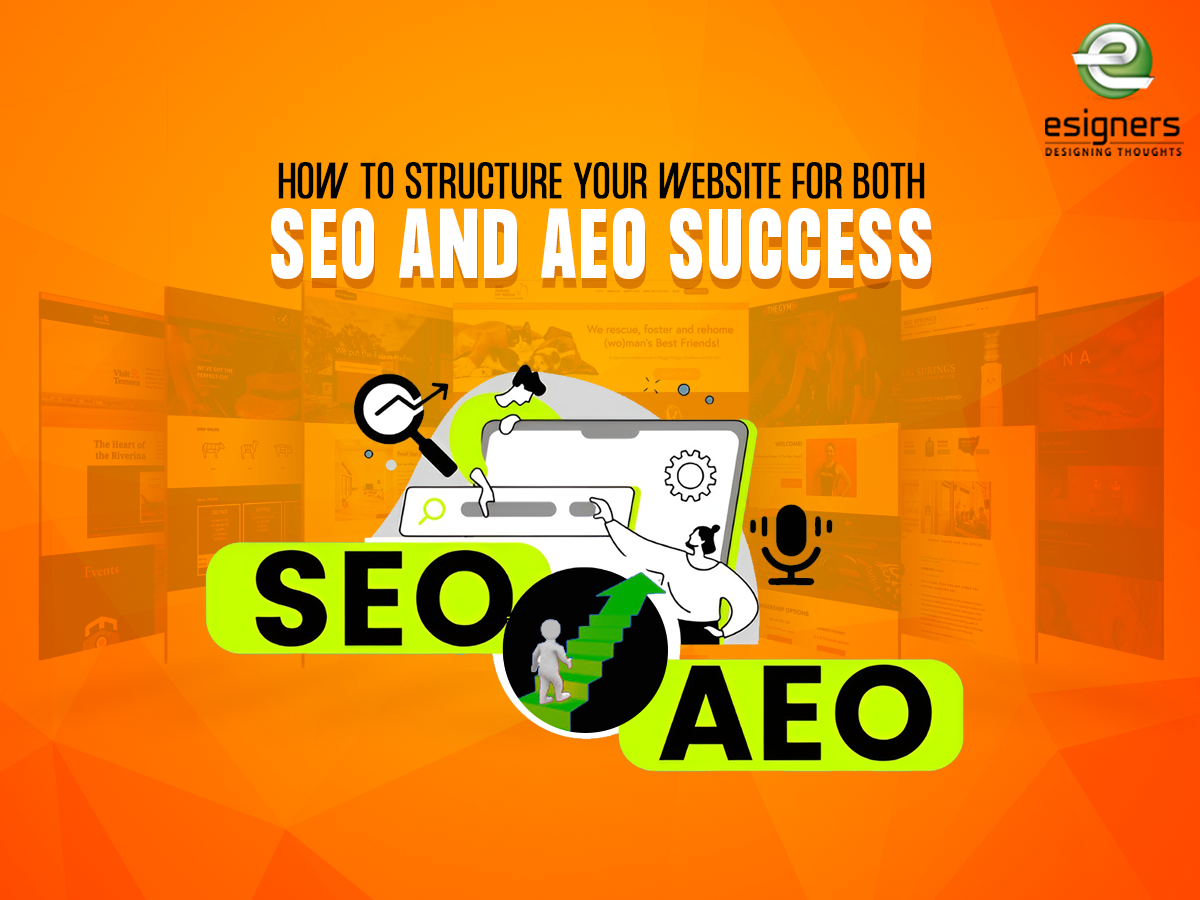Blog
How to structure your website for both SEO and AEO success

August 18th, 2025 by esigners
Search engine optimization (SEO) remains a critical part of digital marketing for attracting organic traffic, but you also need answer engine optimization (AEO) as it is becoming a major strategy for capturing users who are looking for concise and direct answers. This is especially true of artificial intelligence (AI) and voice-powered tools. If you wish to win in both these areas, your website should be structured in such a way that it serves two masters – user intent and search engine algorithms.
Beginning with a clear site hierarchy
The backbone of both AEO and SEO is a properly planned hierarchy. It helps the search engines crawl your website efficiently and thus makes sure users quickly find what they are looking for. The top-level pages should contain core services or categories, the second-level pages must contain specific topics or subcategories, and the third-level pages must have long-tail and detailed content.
Optimizing for people also asks and featured snippets
AEO flourishes when you have authoritative and short answers to specific questions. You can use headings based on questions such as ‘how to’ and ‘what is’, for example. You should also provide a concise answer within 40 and 60 words immediately after the heading, which will be followed by detailed content. You must also use bullet points, tables, and numbered lists for clarity. Such a format will satiate AEO’s requirement for quick answers and also have explanations rich in keywords to aid the SEO.
Using internal linking to create topic clusters
Topic clusters signal content authority and relevance, and this is how they boost SEO. They can also improve AEO by making it easier to locate related answers. For example, you can have a pillar page titled Complete Guide to Digital Marketing. Your cluster pages, in that case, can be titled SEO Basics, Social Media Strategies, and Content Marketing Tips. Internal linking helps search engines understand the depth of topics covered in your website, and answer engines get to follow logical connections linking connected questions.
Using schema markup for context
Schema markup, also known as structured data, helps search engines and answer engines understand your content better. SEO enables rich snippets such as reviews, event info, and ratings. AEO provides exact definitions, frequently asked questions (FAQs), or product details for fast extraction of answers. As a pro tip, you can implement the FAQ schema for pages that answer several related questions at once. This will improve your chances of appearing in AI and voice search responses.
Optimizing for mobile and voice search
Voice and mobile search behaviors influence AEO significantly. Your site has to load quickly, cater to conversational queries, and be navigable easily on mobile platforms. Always use a responsive design, include direct answers in spoken language for common questions, and use a conversational and natural tone to target long-tail keywords.
Ensuring strong technical SEO and quick loading times
Technical SEO aids answer readiness as well as search rankings. For this, you can enable lazy loading by compressing images, use descriptive and clean universal resource locators (URLs), and keep JavaScript render-blocking to a minimum.
Structuring content for depth and skim
You should use a format that permits quick scanning for answers, along with providing detailed context for users who wish to read more. This helps answer engines and users in equal measure. The best practices in these cases are short paragraphs of 2-3 sentences each, highlighted callout boxes or key phrases for crucial points, and subheadings after every 150-300 words.
Maintaining an updated FAQs section
If you have a devoted FAQ page on your website, it can play the role of a goldmine for AEO as it contains naturally question and answer pairs in a clear format. For SEO, this helps you target long-tail keywords and keeps visitors engaged for longer periods.
Refining and tracking based on data
Optimizing your website for AEO and SEO is not a one-time deal – you have to remember and work on it constantly. You can use analytics tools and track which pages are getting featured snippets, time on page, and bounce rates to assess user satisfaction, and which keywords are triggering appearances on voice search.
You do not have to choose between AEO and SEO to structure your website for both. It is about making a content ecosystem that serves algorithms and humans in equal measure. When your website has a clear hierarchy, schema markup, precise answers and topic clusters, not only will it climb in search engine rankings, but it will also get valuable placements on the answer engine.
